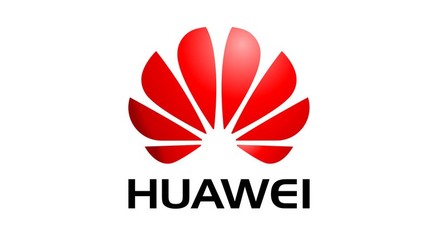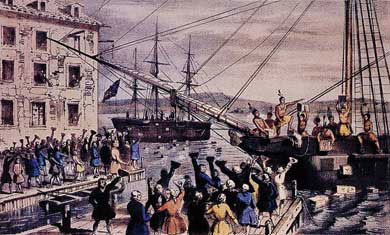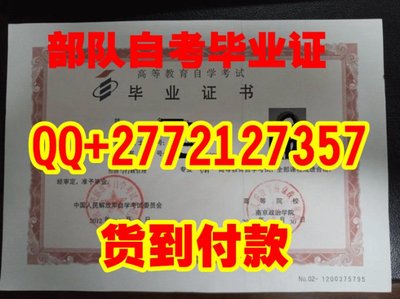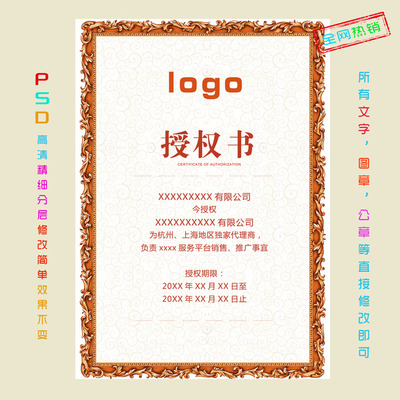你现在所看到的资料,是根据哈曼卡顿英文官方网站上的,关于哈曼卡顿的公司历史介绍进行的翻译,是目前国内最完善的关于哈曼卡顿公司历史的介绍,部分文字翻译不是很准确,还请谅解。
哈曼卡顿(HarmanKardon)是哈曼国际工业(NYSE:HAR)的一个部门,专门生产制造家用与车用音响,总部位于美国纽约伍德布里。JBL、AKG、Infinity也是属于哈曼集团旗下的品牌。HarmanKardon于1953年由热爱音乐与艺术的Dr. SidneyHarman与BernardKardon两人创立。该公司协助创建了高传真音频产业,他们的首个产品是一个FM调音器,在创立后一年HarmanKardon发售了世上首个真正高保真接收器FestivalD1000,该款单声道装置在瞄准非技术性消费者的同时亦结合了许多现时常见的功能,如在单一机身上集合了调音器、组件控制部件与扩音器。1958年HarmanKardon发售世上首个立体声接收器FestivalTA230,再次瞄准非技术性的用户力图让高保真得到更广泛的采用。HarmanKardon是宝马、路虎、奔驰与萨博等汽车和东芝笔记本电脑的主要音响供应商。
哈曼卡顿是哈曼国际工业的一个部门,专门设计生产家用和车用音响。哈曼卡顿紧跟消费者需求,把最注重细节的音响爱好者的平流层标准应用于DVD播放器,音频∕视频接收器和其他声音系统,这样所有人都能很容易操纵它。
公司概况
哈曼卡顿概况
哈曼卡顿品牌的终极目标是为音乐爱好者以最大的方便提供最完美的音质。20世纪50年代,公司创立者西德尼·哈曼和伯纳德·卡顿发明了一种接收器,它把调谐器和扬声器合并在一个单元板上。这样就每个人都能利用它了(不仅仅限于那些懂高科技的音乐发烧友)。21世纪,哈曼克顿率先通过对A∕V接收机后面板连结进行彻底的彩色编码来简化音频∕视频的装置。这期间,该公司从研发立体音响系统,到盒式录象机,再到自动使家庭影院音响系统标准化的遥控器都一直在行业内遥遥领先。无论你对音响系统什么要求,哈曼卡顿都会本着方便易操作的原则让您的音质更加完美。
Harman Kardon History
The story of Harman Kardon is largely the story of SidneyHarman.
Harman, born in Montreal in 1918, grew up in New York City. Froman early age, he showed a flair for business. As a teenager, hecollected recently published magazines, talked local retailers intoselling the used but still interesting publications for a nickelapiece and split the resulting revenues with them. “That nicelittle business helped finance my years in high school and paid formy books in college,” Harman says in his memoir, Mind Your OwnBusiness.
But Harman had another talent: science. At New York’s CityCollege, he majored in physics. In 1939, after he completed school,he found a job in the engineering department of the David BogenCompany, a firm that made public-address sound systems. He and hisboss, chief engineer Bernard Kardon, quickly became friends.
哈顿卡曼公司历史
哈顿卡曼的故事可以说是创始人西德尼·哈曼的故事。哈曼于1918年生于蒙特利尔,在纽约长大。小时候他就对商业颇具天赋。他还是个男孩时,就以每份五美分收集最近发表的杂志,并说服当地零售商卖掉那些过期但有趣的杂志,和他们平分钱。在他的回忆录《管好你自己的事》中,哈曼说“那些小买卖让我在高中生活宽裕,上大学时还用赚的钱买书”。但是哈曼还有另一种天赋:科学。他在纽约市立学院攻读物理专业。1939年毕业后他在大卫伯根公司工程部工作,这个公司生产公共广播音响系统。他和老板——总经理伯纳德·卡顿很快成为好朋友。
Soon, Harman moved from engineering into sales and found that heliked it. In sales, he discovered the importance of payingattention to customers. “To this day, over half a century later, Ican say that no valuable, enduring product ever arose fromcontemplation in my office – or in the engineering department,”says Mind Your Own Business. “I know of no substitute for thefiring line, for listening to the customer, for identifying andresponding to real need.”
He responded to the customers’ needs by innovating. In the early1950s, Harman and Kardon wanted Bogen to let them simplify thecontrols on the company’s public-address systems. Also, aftercustomizing Bogen loudspeakers to play records in their own homesand noticing how much their guests loved the machines’ sound,Harman and Kardon wanted Bogen to manufacture similar devices forthe public. Bogen agreed to Harman and Kardon’s proposals – but heagreed very reluctantly.
Though Harman rose to the rank of Bogen’s general manager, hewasn’t content. Not only did he chafe against Bogen’s conservativeways, but the aging Bogen planned to leave the company to his sonand son-in-law. Harman realized that he would never be able to runthe company as he liked.
In 1953, Harman resigned and took Kardon with him.
很快,他从工程研发部到销售部并发现自己喜欢这份工作。做销售时,他发现了关注消费者的重要性。他在回忆录《管好自己的事》中说“直到近半个世纪后的今天,我还敢说没有一件经久耐用又有价值的产品是我坐在办公室或工程研发部冥思苦想出来的,我知道任何东西都无法取代一线信息,无法取代听取消费者的意见,也取法取代确认关注消费者的真正需求。”他以创新来应对消费者的需求。在1950年早期,哈曼和卡顿希望伯根让他们简化公司公共广播系统的遥控系统。他们在家里按规格改进了伯根公司的扬声器并录了些唱片,注意到他们的客人都非常喜欢这款机器的声音,哈曼和卡顿想让伯根公司也向公众生产相似的设备。虽然伯根答应了他们的请求,却非常不情愿。尽管哈曼坐上了伯根公司总经理的座位他还不满意。他反对伯根公司守旧的管理模式,但是老伯根想把公司留给他儿子和孙子。哈曼意识到他经营这个公司的愿望可能永远实现不了。所以,1953年,他带着卡顿一起辞职了。
The Birth of Harman Kardon
Each man put up $5,000 and formed a new company, Harman Kardon,to manufacture high-fidelity machines for playing music athome.
“At the time,” New York Times reporter William Holstein wrotefifty years later in an article about Harman, “the conventionalwisdom was that to listen to music from the radio, you needed atuner to capture radio signals, a preamplifier, a power amplifierand speakers.” Instead, Harman and Kardon combined multiplecomponents into one easy-to-use unit that they called areceiver.
Built into an attractive housing that looked more like stylishfurniture than complex electronics, the receiver – model nameFestival D1000 – was a huge success. It was especially popular withyoung listeners. “The college campuses were the breeding groundsfor a generation who loved the music and felt that the best way tolisten to it was in the dorm with our equipment,” Harman recalls inhis autobiography.
In 1956, Harman and Kardon’s initial $10,000 investment wasworth $600,000, and Kardon wanted to retire. Harman bought outKardon’s share of the company and kept on working.
Two years later, Harman Kardon produced the Festival TA230, theworld’s first stereo receiver. High-quality sound that seemed tocome from around the listener, not just in front of him, was atlast available to a wide audience. And the wide audience lovedit.
Growth and Pain
哈曼卡顿公司的诞生
他俩每人投入5000美元成立了新公司,哈曼卡顿就在家里研制高保真的音乐播放器。55年后纽约《时代周刊》记者WilliamHolstein在关于哈曼的一篇报道中写道“当时传统的方式是在收音机上听音乐,需要一个接受信号的调谐器,一个前置扩音器,功率放大器和扩音器。”作为替代品,哈曼和卡顿把多样的元件都组合在一个操作简易的部件中,他们把它叫做接收器。首款名为FestivalD1000的接收器获得了巨大成功,它复合的装置都被固定在迷人的外壳内,从外表看更像时髦的装饰品而非复杂的电子产品。尤其受广大青年音乐迷的欢迎。哈曼在他的自传里回忆说“大学校园往往是培养一代人热爱音乐的温床,而最佳方式就是呆在宿舍里用我们的设备听音乐。”到1956年,他们最初投入的10000美元已升值到6000,000了,卡顿想开始零售。哈曼把卡顿的股份分给他,然后继续经营公司。两年后,哈曼卡顿生产出世界第一款立体声接收器名为FestivalTA230。它最终给听众带来了似乎从四面八方而不仅仅是前面发出的高清晰声音,当然也收到了广大听众的喜爱。
Harman Kardon continued to create popular products. Starting inthe late 1950s, for instance, Harman Kardon’s Citation series ofamplifiers and other components included some of the mosttechnologically advanced equipment in consumer audio. (Today, thoseCitation machines are collector’s items among audiophiles.)
By the early 1960s, Harman was a happy man. In 1962, heconfidently merged Harman Kardon with a cable-television company,Jerrold Corporation. Soon, he was no longer so happy.
Harman felt that Jerrold’s chief, Milton Shapp, interfered toomuch in Harman’s own work. After a series of arguments, Shappbought out Harman’s share of the company. Harman now had a pile ofcash, but he was cut off from the company that he had built.What’smore, this constantly productive man suddenly found himself withnothing to do.
Harman might have been down, but he wasn’t out. He took some ofthe money from the buyout and invested in a small conglomerate, theJervis Corporation. He took over the company and used its financialclout to buy Harman Kardon back. He also acquired other audiohouses, such as the prestigious JBL, and eventually renamed theentire group of companies Harman International Industries,Incorporated.
Meanwhile, Harman Kardon continued to seek out new technologies.In the late 1960s, the company began working with a young,high-tech firm with fresh ideas about reducing audio noise. Itsname was Dolby Laboratories. Harman Kardon products continue tofeature Dolby equipment.
As the 1960s became the ‘70s, Harman Kardon grew larger and moreprofitable. Harman attributed the success of Harman Kardon and hisother companies to a new style of management. Instead of simplyissuing orders, as executives at other companies did, Harmanencouraged his managers (as he told Music Trades magazine in 1988)“to respect people who do the work, to see them as a great untappedresource.” He felt, for instance, that the workers buildingamplifiers and speakers could contribute smart, practical ideasabout ways to improve the manufacturing process.
Harman’s approach apparently worked. By the mid-‘70s, HarmanKardon was a leader in American consumer audio.
壮大与挫折
哈曼卡顿继续研发流行的产品。例如,从20世纪50年代末开始,哈曼卡顿Citation系列的扩音器和其它元部件包括一些在消费类音频领域内的尖端技术设备。(知道今天那些Citation扩音器还是音乐发烧友收集的对象)。到1960年早期,哈曼一直过的很愉快。但在1962年,他信心十足地把哈曼卡顿公司和杰罗德公司(一个有线电视公司)合并了,很快,他的生活不再愉快了。哈曼觉得杰罗德公司经理MiltonShapp过多干涉了他自己的工作。在一系列争论过后,Shapp买断了哈曼的公司股份。现在哈曼虽然有一大笔钱,但他与自己一手建立起来的公司脱离关系了,而且这个一直富于创造力的年轻人突然发现自己无所事事起来。
哈曼可能低落过,却从没出局。他拿了一部分买断的钱在一个叫Jervis公司的联合企业投资。他接管了这个公司并利用它的资金实力把哈曼卡顿重新买了回来。他还收购了其他几家音频公司如著名的JBL,最后他把公司重新命名为哈曼国际集团联合公司。同时,哈曼卡顿继续致力于开发新的高科技产品。20世纪60年代后期,他的公司开始和一个名叫Dolby实验室的公司合作。那是一个年轻,创新以高科技为导向的公司,它们研制降低音频噪音的装置。从此,哈曼卡顿公司的产品开始有Dolby装置的特色。到了70年代,哈曼卡顿变得更强大,盈利更多。哈曼把哈曼卡顿和他的其他公司的成功归功于一种新的管理模式。卡曼鼓励他的管理人员们不要像其他公司的那样只会下命令,而是“去尊敬工作人员,把它们当做未开发的资源一样看待”。就像他1988年在《音乐行业杂志》上说的一样。他感觉到,例如,生产扩音器的工人能为提高生产过程的效率提出机智又实用的计策。哈曼的这种态度果然收到很好的效果。到70年代中期,哈曼卡顿已经成为美国消费类音频的龙头企业。
Goodbye and Hello
In 1976, Jimmy Carter – a candidate that Sidney Harman hadsupported – became President of the United States. What’s more, heasked Harman to join his administration as Undersecretary ofCommerce.
In order to enter the government, Harman had to give up any jobsand holdings that might become a conflict of interest. For thesecond time, he sold his company. The buyer was Beatrice Foods, alarge conglomerate that included many products in addition to food,and the price was about $100 million.
Beatrice’s executives didn’t seem to know how to run an audiobusiness. Sidney Harman saw his child go into decline, and hedidn’t like what he saw. By 1980, Harman International had lostabout 40 percent of its assets.
By the time the Carter Administration came to a close, SidneyHarman had left the government and was determined to get his oldcompany back. He bought Harman International back from Beatrice for$55 million.
He didn’t get Harman Kardon, though. During the late 1970s,Beatrice had sold the company to a Japanese firm.
Five years would pass before Harman could return Harman Kardonto Harman International. Finally, in 1985, he was able to buyHarman Kardon back. His flagship company was in his hands onceagain.
告别过去展望未来
1976年,西德尼·哈曼支持的总统候选人吉米·卡特胜出,成为美国总统。他还让哈曼加入政府做商务部副部长。为了进驻政府部门,哈曼不得不放弃一些工作和可能会变为利益冲突的公司控股。所以他第二次卖掉了公司,售价约1亿美元。买方是Beatrice食品有限公司,也是一家联合企业除了食品还经营许多其他产品。Beatrice公司主管似乎不懂怎么经营音频产业。西德尼哈曼眼看自己苦心经营的公司日益衰败,这不是他想看的结果。到1980年,哈曼国际公司已经失去近40%的资产了。到卡特政府落幕,西德尼哈曼离开政府部门决定把自己的旧公司买回来。于是他花了5500万美元又把哈曼国际公司从Beatrice手中买回来了。但是,他却没得到哈曼卡顿,因为在70年代末,Beatrice就把它卖给一家日本公司了。哈曼又花了五年时间把哈曼卡顿转到哈曼国际集团名下。最后,在1985年,他终于能把哈曼卡顿公司买回来。他的旗舰公司再一次掌握在自己手中了。
Back to Life
Returning to Harman’s hands didn’t suddenly make Harman Kardon aflowering success. In the 1990s, Harman Kardon was running intotrouble. The company still made excellent products, but it wasn’tleading the industry in new technologies anymore. The world ofaudio no longer spoke about hi-fi and stereo but about CDs, MP3,DAT, and other bits of techno-slang.
Harman, his executives and his engineers took action. In 1999,for instance, Harman Kardon presented the CDR 2, the world’s firstCD audio recorder with 4x dub speed, allowing music fans toaccumulate more sounds and songs quickly with no loss of audioquality. Also that year, the company produced SoundSticks® computerspeakers, a combination of science and sculpture so beautiful thatNew York’s Museum of Modern Art has added them to its designcollection. In 2000, Harman Kardon teamed with Microsoft to developa high-tech remote control for computers. Another advanced remotecontrol came along the next year, as Harman Kardon’s patentedEzSet™ remote allowed owners of multichannel audio systems tocalibrate their speakers automatically for superb surroundsound.
Additional inventions followed. By 2003, the company’s 50thanniversary, Harman Kardon was going strong again.
起死回生
公司归哈曼所有并没让它突然取得丰硕的成果。90年代,哈曼卡顿的经营陷入了困境。公司的产品仍然卓越超群但却不能在新技术上遥遥领先了。音频世界不再谈论高保真性,立体声而是关于光盘,MP3,数字式录音带和其他一些技术俚语。与是哈曼和公司主管,工程师一起采取措施。例如,在1999年,哈曼卡顿推出了世界上首款以四倍速度配音的CD音频录音机,型号为CDR2.它能让音乐迷们在不影响音质的前提下快速地积聚更多声音和歌曲。同年,公司又生产出SoundSticks牌电脑扬声器。它把高科技和雕塑完美地结合于一体,美国的现代艺术博物馆已经将其列入他们的设计集合中了。2000年,哈曼卡顿和微软公司合作研发一种高科技电脑遥控器。第二年,作为哈曼卡顿公司专利产品的EzSet高科技遥控器问世了,有了它多声道音响系统的主人就能自动校准扬声器,欣赏到卓越的环绕声。更多的新发明接二连三出现。到2003年公司成立50周年时,哈曼卡顿再次变得强大了。
The Torch Passes
Sidney Harman continued to run Harman Kardon and his othercompanies. Still, he realized that he couldn’t keep going forever.In May of 2007, as he approached his 88th birthday, Harman hiredDinesh Paliwal as Harman International’s chief executiveofficer.
Paliwal, an engineer with degrees from the Indian Institute ofTechnology and Miami University of Ohio, came to HarmanInternational from the presidency of the global power andautomation technology leader ABB Ltd. About a year later, hesucceeded Harman as the company’s chairman.
The engineers, executives, and other employees of Harman Kardonwatched these changes with considerable interest, but none of thechanges swayed them from their usual concern: making great audioproducts. In 2007, for instance, the Chicago Athenaeum: Museum ofArchitecture and Design gave its Good Design™ award to HarmanKardon’s DMC 100 digital media center. And in 2008, the prestigiousElectronic House magazine bestowed Product of the Year honors onHarman Kardon’s AVR 354 audio/video receiver.
What’s ahead for Harman Kardon? More of the same – and if thatsounds boring, consider that at Harman Kardon, “more of the same”means more innovation, more attention to its customers’ needs andmore great sound. Those are the principles on which Sidney Harmanstarted the company. And they’re the principles that guide ittoday.
西德尼哈曼继续经营哈曼卡顿和他其他的公司。可是他意识到自己不能永远工作。在2007年5月,他的88岁生日即将到来之际,哈曼聘任DineshPaliwal为哈曼国际公司的总裁。DineshPaliwal是一位工程师,拥有印度理工学院和俄亥俄州迈阿密大学双学位。来哈曼国际公司前,他是全球电力和自动化技术的领跑者ABB公司的总裁。大约一年后,他接任哈曼成为公司的董事长。哈曼卡顿的工程师,主管人员和其他员工都饶有兴趣地关注着这些变化,但这些变化从未改变他们习以为常的兴趣点---生产更出色的音频产品。例如,在2007年,芝加哥协会:建筑设计博物馆把“优秀设计”这一殊荣颁发给哈曼卡顿的DMC100数字媒体中心。2008年,颇负盛名的《电子大厦》杂志授予哈曼卡顿的AVR 354系列音频/视频接收器年度产品奖。
哈曼卡顿的未来会怎么样呢?更多会和现在一样吧——如果你觉得这么说很无聊,听听哈曼卡顿的解释。“更多会和现在一样”意味着有更多创新,更关注消费者需求,生产更精良的声音配置。这些一直是西德尼·哈曼创立公司的原则,它们也是引导公司发展到现在的法宝。
国内首发哈曼卡顿公司历史简介,转载须注明出处。
大连中升之星
大连奔驰4S店
大连中升奔驰
奔驰销售
奔驰报价
销售顾问:张志杰
24小时服务热线:
13942816176
====================
网络联系方式
加为好友请注明“荣威”。
飞信:
13942816176
QQ:
11464115
(21:00~23:00在线)
奔驰世家群:
41504191
MSN:
jeffbj24@126.com
(由于工作时间所限网络联系方式只限20:00~22:00)
====================
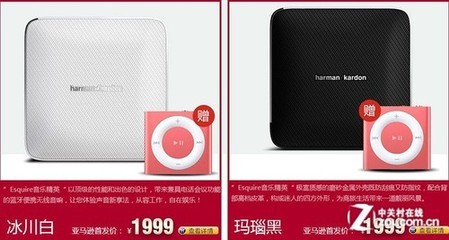
地址:
大连沙河口区河曲街20号
大连中升之星汽车销售服务有限公司是大连地区第一家按照奔驰AH400建造的奔驰4S旗舰店,主营奔驰销售,奔驰报价,奔驰跑车,奔驰suv,奔驰B级,奔驰C级,奔驰E级,奔驰S级,奔驰R级,奔驰GLK,奔驰ML,奔驰GL,奔驰SLK,奔驰S600,奔驰S400,奔驰S350,奔驰S300,奔驰C200,奔驰E300,奔驰E260,奔驰E200,奔驰GLK300,奔驰GLK350,奔驰ML350,奔驰ML500,奔驰GL450,奔驰R300,奔驰R350,奔驰R500,奔驰B200,smart,AMG等。期待您的品鉴与激情试驾。
 爱华网
爱华网